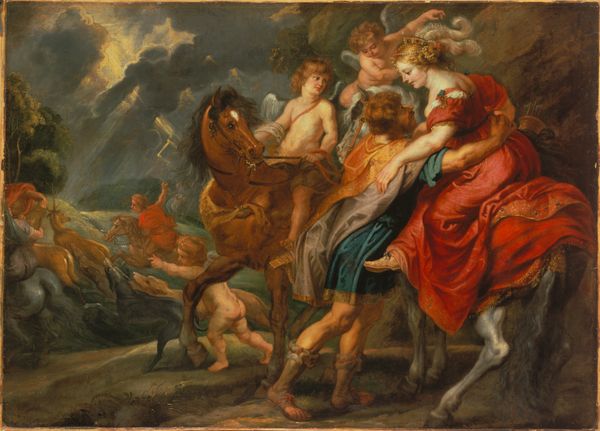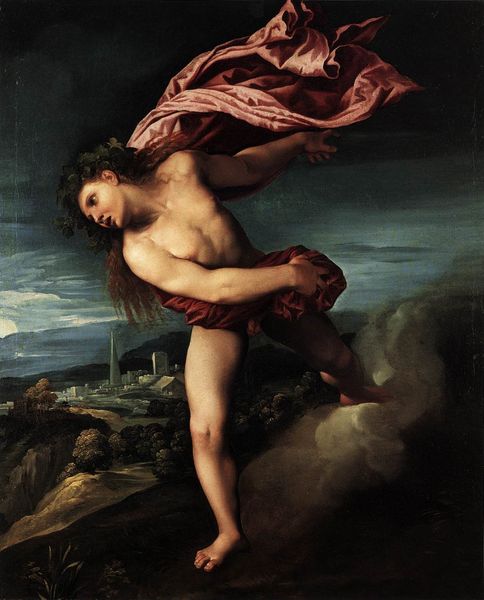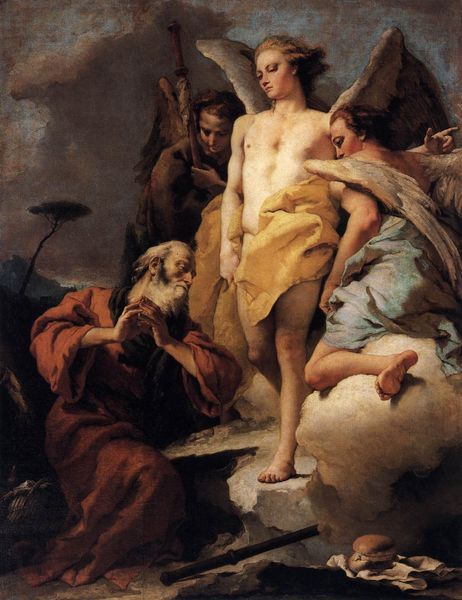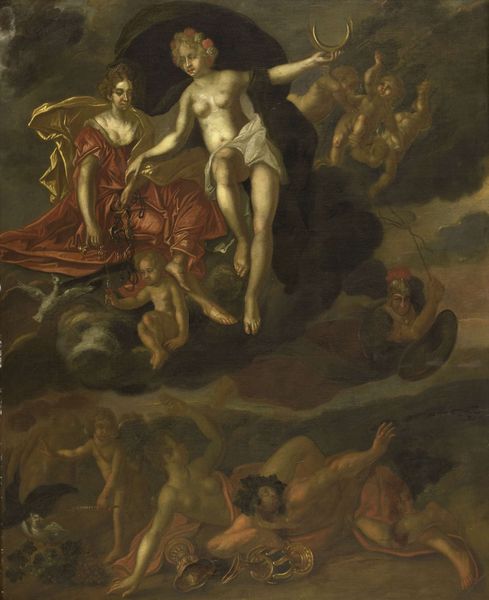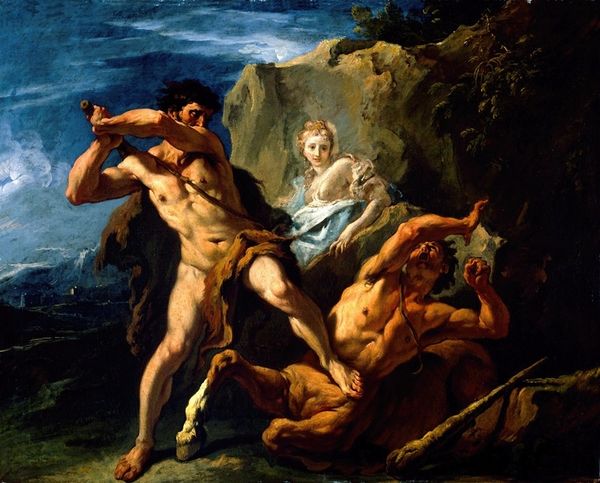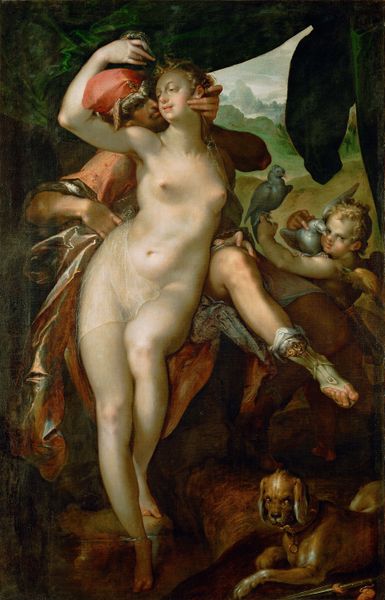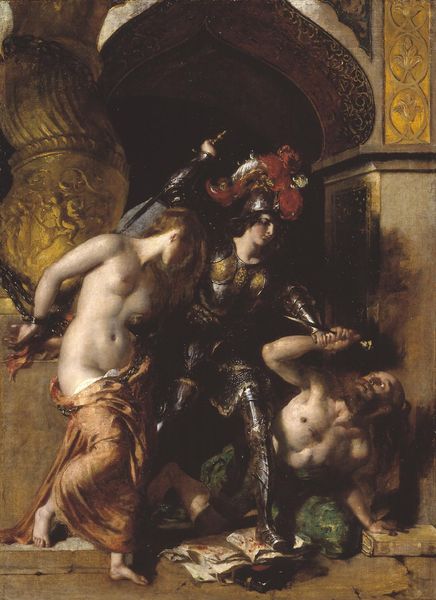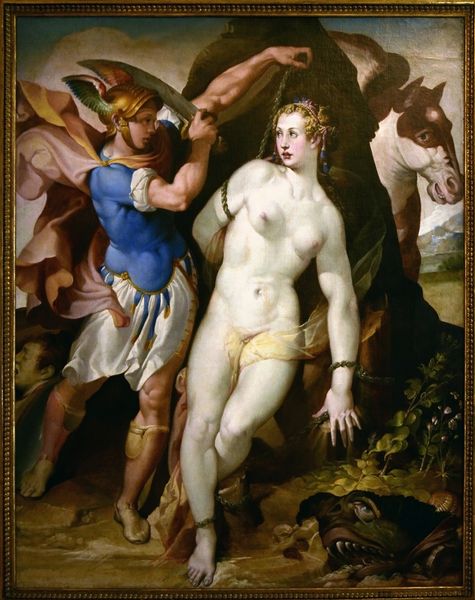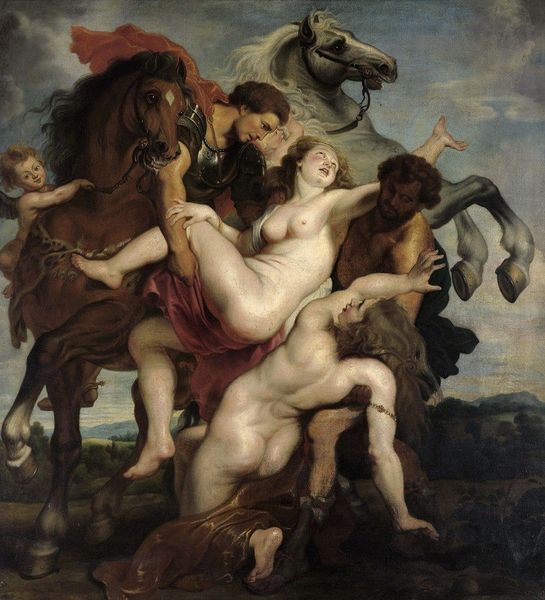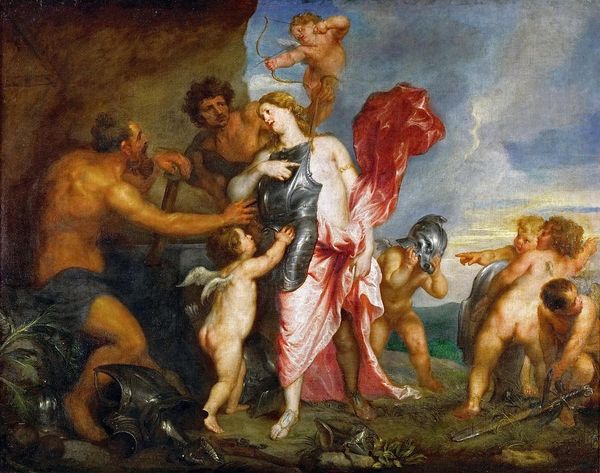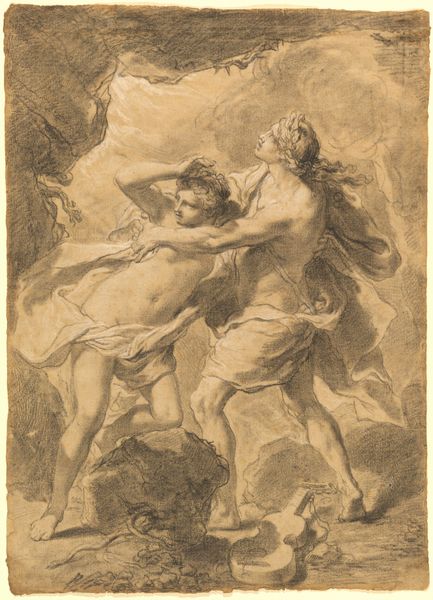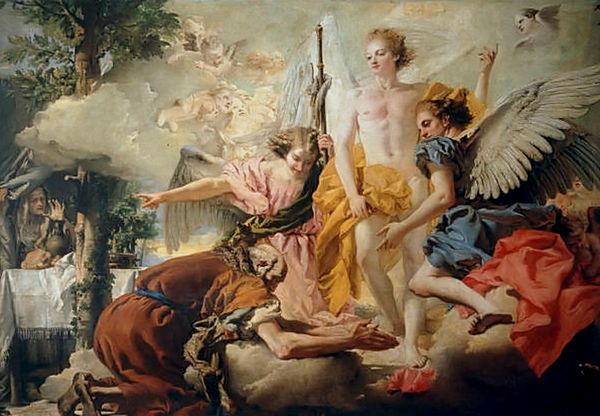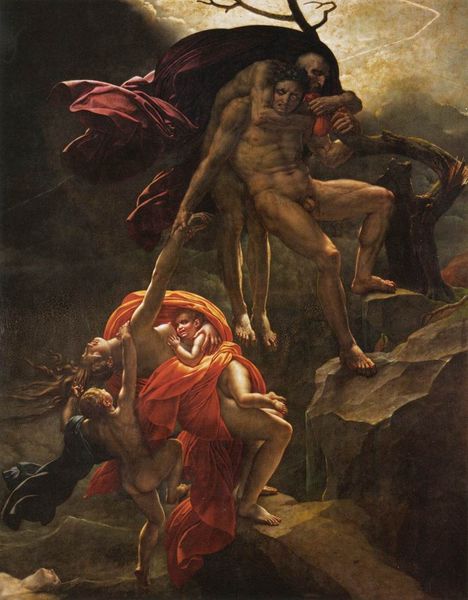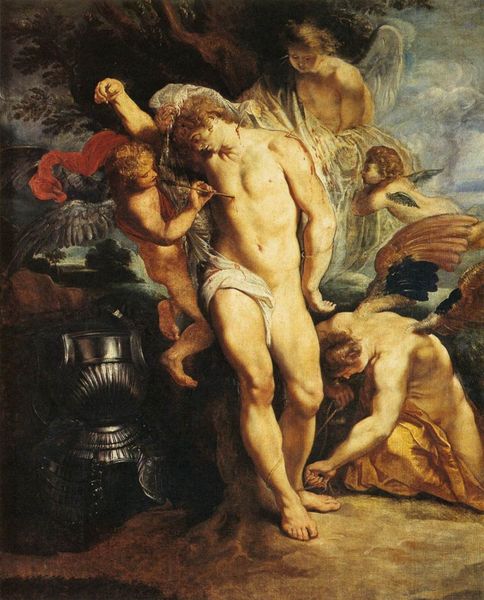
oil-paint
#
allegory
#
baroque
#
oil-paint
#
landscape
#
figuration
#
oil painting
#
roman-mythology
#
mythology
#
history-painting
#
nude
Dimensions: 193 x 193 cm
Copyright: Public domain
Editor: Here we have Guido Reni's "Abduction of Deianira," painted in 1621 using oil on canvas. There’s a dramatic swirl of figures and fabric. What I find immediately striking is the vulnerability conveyed in Deianira's expression against the centaur’s aggressive posture. What's your take on this painting? Curator: Reni's Baroque painting, with its overt theatricality, often invites questions about power dynamics and gender. Deianira’s abduction isn’t merely a mythological scene; it's a loaded representation of female agency, or lack thereof, within patriarchal narratives. How does the dynamic between Deianira and the centaur – her elevated but clearly distressed position, his forceful hold – speak to contemporary dialogues around consent and control? Editor: It’s uncomfortable to see that imbalance of power depicted so plainly, even within a classical story. Does that interpretation shift when we consider the painting's context in 17th-century Europe? Curator: Absolutely. Understanding the sociopolitical context is vital. Art during this period was often commissioned by the powerful – the church, the aristocracy – and served as a tool for reinforcing dominant ideologies. Visual representations of women, especially, were heavily mediated by male perspectives. Considering this, how might Reni’s “Abduction” both reflect and potentially subtly critique these societal norms? Where might an audience find the "subtle critique," if it is there at all? Editor: Maybe in Deianira’s upward gaze? It's a look of pleading or perhaps defiance, rather than simple submission. That adds a layer of complexity to the narrative. Curator: Precisely. By focusing on her gaze, we can start to unpack the subtle ways in which artists could introduce nuance, even within seemingly straightforward mythological scenes. Thinking critically about these choices helps us move beyond surface-level readings and engage with the artwork's potential for broader social commentary. I hadn't noticed this painting from that perspective before. Editor: This makes me want to dig deeper into how female figures are represented in Baroque art.
Comments
No comments
Be the first to comment and join the conversation on the ultimate creative platform.
